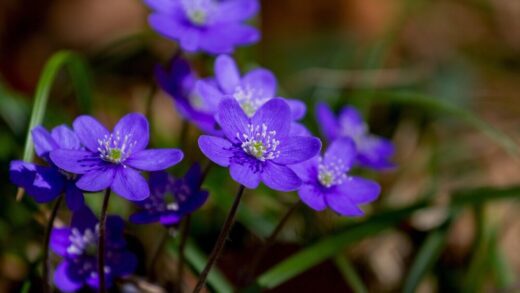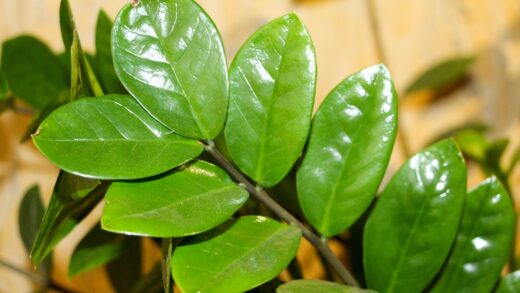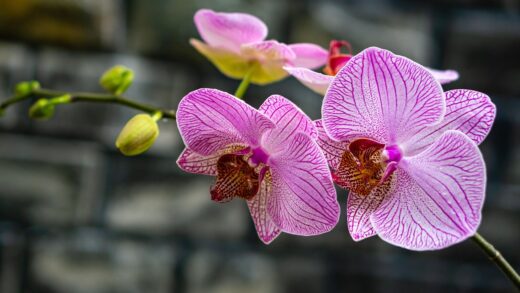Light is the fundamental energy source that drives the life of a sleeping hibiscus, dictating its growth, health, and its ability to produce its characteristic, vibrant flowers. Understanding and providing the appropriate light intensity and duration is one of the most critical aspects of its cultivation. This plant’s needs are a direct reflection of its origins as an understory shrub in tropical and subtropical climates, where it is accustomed to the bright, yet filtered, sunlight that penetrates the forest canopy. Replicating these specific light conditions is the key to unlocking the plant’s full potential, resulting in a specimen that is not just surviving, but truly thriving.
The ideal light for a sleeping hibiscus is best described as bright, indirect light. This means a location where the plant is illuminated for many hours of the day but is shielded from the harsh, direct rays of the sun, particularly during the intense afternoon hours. Direct sunlight can be too strong, leading to the scorching of its leaves, which manifests as brown, crispy patches and a generally washed-out or yellowish appearance. Finding this perfect balance is a primary goal for any cultivator of this beautiful plant.
The plant’s appearance is often the best indicator of whether it is receiving the correct amount of light. A plant in an ideal light situation will have lush, deep green foliage and will produce a steady supply of flowers during its blooming season. It will have a compact and bushy growth habit. In contrast, a plant that is not receiving enough light will often become “leggy,” stretching its stems out in search of more light, resulting in a sparse and lanky appearance with large gaps between the leaves. Flowering will also be significantly reduced or may cease altogether in low-light conditions.
It is also important to remember that light conditions change with the seasons. The angle and intensity of the sun are much lower in the winter than in the summer. A location that provides perfect, bright indirect light in the summer may become too shady in the winter. Conversely, a spot that is ideal in the winter might expose the plant to scorching sun in the summer. A vigilant gardener will observe these seasonal changes and be prepared to move the plant accordingly to ensure it consistently receives the optimal amount of light throughout the year.
The ideal light exposure
For a sleeping hibiscus grown outdoors in a suitable climate, the perfect location would be one that receives several hours of gentle morning sun and is then protected by shade during the hottest part of the afternoon. An eastern-facing aspect is often ideal, as it captures the less intense morning light. Alternatively, planting it under the dappled shade of a large, high-canopied tree can perfectly replicate the filtered light of its native forest understory environment. This type of location protects the plant from the stress of excessive heat and light while providing enough energy for robust growth and flowering.
More articles on this topic
When cultivated as an indoor plant, the challenge is to find the brightest possible spot that is still out of the direct path of the sun’s rays. Placing the plant a few feet away from a south- or west-facing window can work well, as the intensity of the light is reduced with distance. An east-facing window is often a perfect choice, providing direct morning sun that is not strong enough to cause harm. Sheer curtains can also be used to diffuse the light from a sunnier window, creating the bright but indirect conditions that the sleeping hibiscus loves.
It is important to rotate a container-grown plant periodically, perhaps a quarter turn every week or so. Plants are phototropic, meaning they will naturally grow towards their light source. Regular rotation ensures that all sides of the plant receive adequate light, promoting even, symmetrical growth and preventing the plant from becoming lopsided. This simple practice can make a significant difference in the overall shape and appearance of your specimen, keeping it looking full and balanced from every angle.
The duration of light is also a factor. The sleeping hibiscus appreciates long days of bright light. In its native habitat near the equator, day length is relatively consistent throughout the year. When grown in more temperate latitudes, it will respond to the long days of summer with vigorous growth. During the shorter days of winter, even in a bright window, the reduced duration and intensity of the light will contribute to the plant’s natural slowdown and entry into a semi-dormant state, which is a normal and healthy part of its annual cycle.
Symptoms of insufficient light
One of the most obvious signs that a sleeping hibiscus is not receiving enough light is etiolation, or leggy growth. The plant will begin to stretch its stems, reaching for a perceived light source. This results in elongated internodes, which is the space on the stem between the leaves. The overall appearance will be sparse and gangly rather than full and bushy. This is a clear survival mechanism, as the plant invests its limited energy into growing taller to find a better light source, often at the expense of its lower leaves.
More articles on this topic
A lack of flowering is another primary symptom of inadequate light. The production of flowers is a very energy-intensive process for a plant. If it is not receiving enough light to photosynthesize effectively and create sufficient energy reserves, it will conserve its resources for basic survival and vegetative growth. A healthy, mature sleeping hibiscus that is well-cared-for but refuses to bloom is very often situated in a location that is simply too shady. Moving it to a brighter spot is usually the most effective way to encourage it to produce its beautiful, pendulous blossoms.
The foliage of a light-deprived sleeping hibiscus will also provide clues. The leaves may be smaller than normal and may have a lighter, paler green color instead of the rich, deep green of a healthy plant. In cases of significant light deprivation, the lower leaves may turn yellow and drop off as the plant sheds older foliage to redirect its limited resources to the new growth at the top of the plant that has a better chance of reaching the light. The overall vitality of the plant will be visibly diminished.
Observing the plant’s growth direction can also indicate a need for more light. If you notice that all the stems and leaves are straining and growing in one specific direction, it is a clear sign that the plant is trying to get closer to its primary light source. This is a natural phototropic response. While rotating the plant can help to even out its growth, if the leaning is severe, it is a strong indication that the current location does not provide enough ambient light, and a brighter position is needed for the plant’s long-term health.
Problems with excessive light
While insufficient light is a common problem, too much direct sunlight can be equally, if not more, damaging to a sleeping hibiscus. The most immediate and obvious symptom of excessive light is leaf scorch. This appears as brown, dry, or crispy patches on the leaves, particularly in the areas most exposed to the sun. In some cases, the leaves may take on a bleached or “washed-out” whitish or yellowish appearance. This damage is irreversible, and the affected leaves may eventually drop from the plant.
A plant that is consistently exposed to more sun than it can tolerate will often have a generally stressed appearance. The leaves may be a pale, yellowish-green instead of a deep, vibrant green, even if there are no distinct scorch marks. The plant may also exhibit signs of wilting during the hottest part of the day, even when the soil is adequately moist. This happens because the rate of water loss through transpiration from the leaves exceeds the rate at which the roots can absorb water from the soil, a direct result of heat and light stress.
In an attempt to protect itself from the intense light, the plant may also develop smaller leaves. This is a physiological adaptation to reduce the surface area that is exposed to the damaging rays of the sun. While the plant may still grow, its overall appearance will be less lush and full than a plant grown in optimal, indirect light. Flowering might also be affected, as the plant diverts its energy to coping with the environmental stress rather than to producing blossoms. The quality and longevity of the flowers may also be reduced.
It is crucial to be particularly mindful of light intensity when moving a plant from a lower-light environment to a brighter one, such as transitioning an overwintered plant back outdoors in the spring. A plant that has become acclimated to indoor light levels has very tender foliage that is extremely susceptible to sunburn. This is why the process of “hardening off,” gradually reintroducing the plant to outdoor conditions over a week or two, is so important. This gradual exposure allows the plant to build up its tolerance to the higher light levels and prevent severe damage.
Using artificial light
For gardeners who lack a location with sufficient natural light, especially during the dark winter months, artificial lighting can be an excellent solution for keeping a sleeping hibiscus healthy. Standard incandescent bulbs are not suitable as they produce too much heat and not the right spectrum of light for plant growth. The best options are fluorescent lights or, more modernly, LED (Light Emitting Diode) grow lights. These are energy-efficient and are designed to produce the specific wavelengths of light that plants need for photosynthesis.
When using artificial lights, the distance of the light source from the plant is critical. If the lights are too close, they can generate heat that could burn the leaves. If they are too far away, their intensity will be too low to be effective. As a general rule, fluorescent tubes should be positioned about 15 to 30 centimeters above the top of the plant, while the optimal distance for LED lights can vary depending on their power, so it is best to follow the manufacturer’s recommendations.
The duration of supplemental lighting is also important. To keep a sleeping hibiscus healthy, it will need approximately 12 to 16 hours of light per day. This mimics the long days of its active growing season. Using an automatic timer is the easiest and most reliable way to ensure a consistent light schedule for your plant. This consistency helps to regulate the plant’s internal clock and promotes steady, healthy maintenance of its foliage throughout the darker months.
While artificial lights can be highly effective at keeping a plant healthy through the winter, it is important to remember that they are rarely a perfect substitute for the full spectrum of natural sunlight. When spring arrives and outdoor conditions are suitable, transitioning the plant back to a location where it can receive natural daylight is always beneficial. The combination of using artificial light for winter maintenance and natural light during the growing season can be a highly successful strategy for long-term cultivation.


















